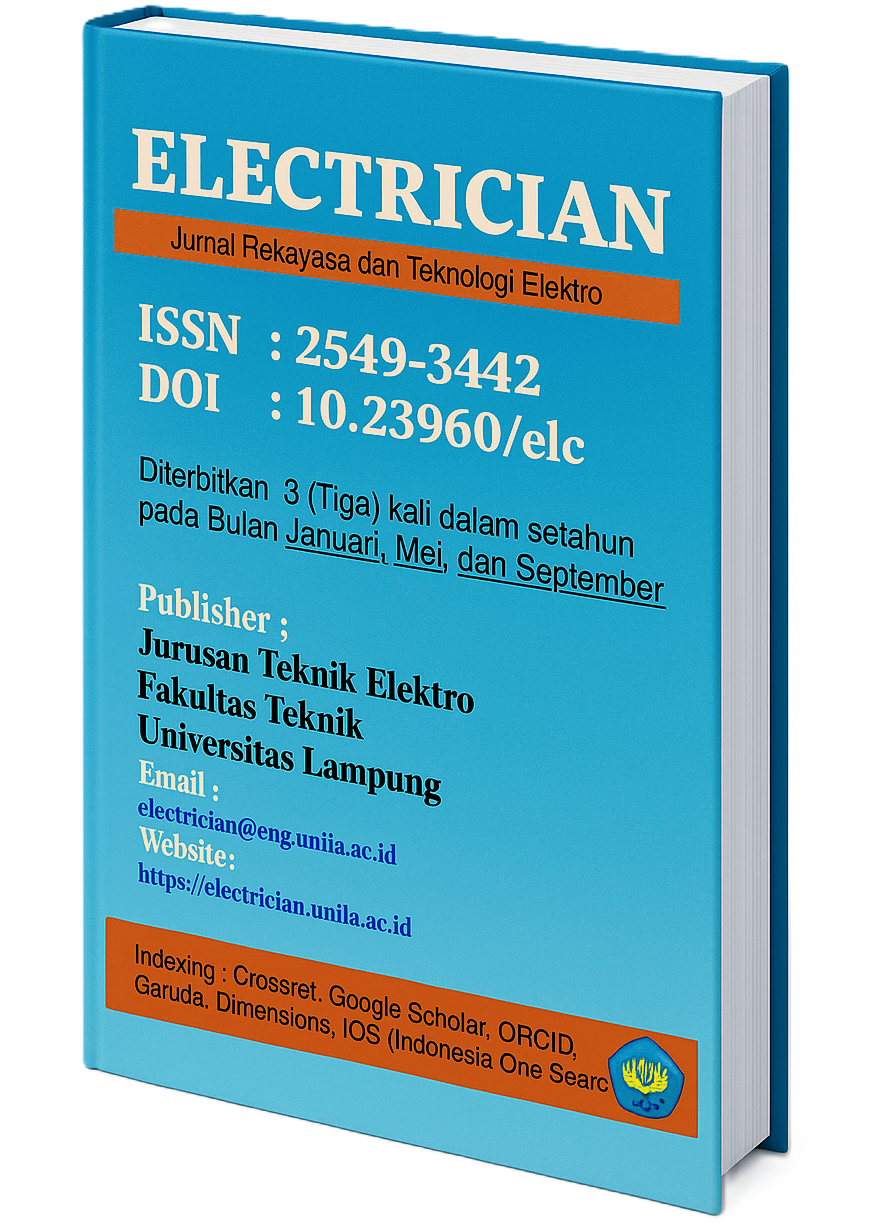Artikel (543)
This paper discusses about how to design fire fighting robot for high building based on Microcontroller ATMega 8535. Robot is the replica of fire fighting car where fire fighting is used fan.Microcontroller ATMega 8535 is used as a controller, DC Motor is used to drive wheel and ladder, phototransis...
Electrician : Jurnal Rekayasa dan Teknologi Elektro; Vol. 3 No. 2 (2009); 109-118 | 2012
BTS (Base Transceiver Station) is a high building that vulnerable to lightning strike. Once the BTS has been struck by lightning, an overcurrent will flow to the system caused by a lightning surge current. This surge current then distributed to the line that connected to the grounding system through...
Electrician : Jurnal Rekayasa dan Teknologi Elektro; Vol. 3 No. 2 (2009); 96-108 | 2012
Electrician : Jurnal Rekayasa dan Teknologi Elektro; Vol. 3 No. 2 (2009); 90-95 | 2012
Electrician : Jurnal Rekayasa dan Teknologi Elektro; Vol. 3 No. 2 (2009); 81-89 | 2012
Electrician : Jurnal Rekayasa dan Teknologi Elektro; Vol. 3 No. 1 (2009) | 2012
Electrician : Jurnal Rekayasa dan Teknologi Elektro; Vol. 3 No. 1 (2009) | 2012
Electrician : Jurnal Rekayasa dan Teknologi Elektro; Vol. 3 No. 1 (2009) | 2012
Electrician : Jurnal Rekayasa dan Teknologi Elektro; Vol. 3 No. 1 (2009) | 2012
ZnO is one of the main ingredients of making varistor can be used as a protective device to protect electronic and electrical equipment from the dangers of impulse over voltage. Ability to function as a varistor protective because ZnO has a resistance that is not linear. When the system did not expe...
Electrician : Jurnal Rekayasa dan Teknologi Elektro; Vol. 3 No. 1 (2009); 67-80 | 2012
Reactive power flow regulation is power system is required to improve voltage profile and reduce system losses. Reactive power flow regulation is done using correct tap setting on the regulating transformer. The study is conducted through literature survey and simulation using ETAP. The result shows...
Electrician : Jurnal Rekayasa dan Teknologi Elektro; Vol. 3 No. 1 (2009); 55-66 | 2012


